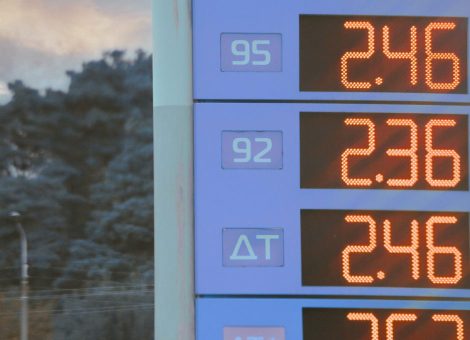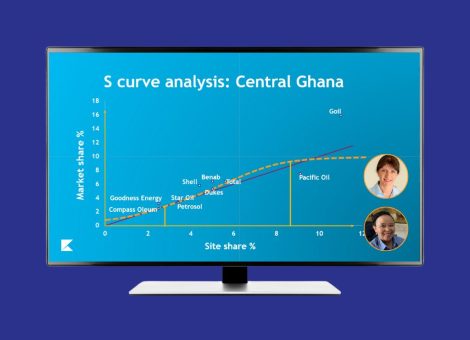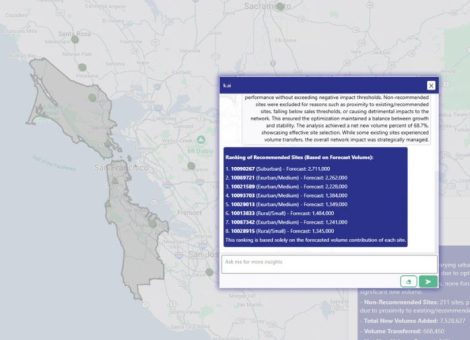Dynamic predictive intelligence: essential to fuel retail success
Predictive intelligence is not a new concept. Marketers across various industries have always observed past consumer behavior, used that data to predict future behavior and adjusted their strategy accordingly, even when the frequency of these changes was minimal. In this electronic age, where consumer data can be collected in real-time on a larger scale, it’s becoming easier than ever to build accurate, highly-complex predictive models that react dynamically to consumer behavior changes. In the fuel and convenience retail market especially, this ability is key to building a fuel and convenience retail center of excellence.
Planning Strategic Reactions Based on Consumer Behavior
In retail fuels, understanding which of the 7 Elements drives consumer behavior is key to effective network planning and fuel pricing. By building forecasting models based on past consumer behavior, you can plan strategic reactions to that behavior, both long- and short-term.
It will take a considerable amount of time, effort and money to see a return on changes to your retail network, so having the ability to accurately forecast upfront is essential to making smart changes to optimize your capital spend. If you’re investing millions of dollars in a few new pumps at your station, how do you ensure you’re going to get a good return? You need a predictive modeling tool intelligent enough to understand which data is valuable, how to fill any gaps in data, and how to adjust its predictions based on real-time changes.
When optimizing your fuel pricing strategy, you can build a model that answers the questions: Based on certain price positions, do consumers in my market buy more or less fuel? To what extent do I need to change prices for consumer behavior to change as well? And as a result, how will these changes impact my volume and margins? The consumer data associated with fuel prices can provide these answers and inform your strategy, allowing you to create a more sustainable pricing plan.
Dynamic predictive intelligence gives you a more stable way of managing the often volatile retail fuel pricing arena through strategic analysis of the bigger picture, rather than reactive responses to individual price changes. It helps you understand and remain aware of the differences between anomalous events that impact volume, such as severe thunderstorms, and more fixed elements that can impact your volume in the long-term, such as car washes or fresh food offerings.
Managing Market Volatility with Calculated Risks
Too often, retailers overreact to changes in consumer behavior caused by short-term anomalies, so building dynamic predictive models with the right frequency is critical. You must understand the specifics of your market — including market maturity, customer demographics and disparate demand cycles — to predict a true return on your investments and ensure you’re reacting to the right shifts in demand.
As your market matures, you’ll be able to understand volatility more clearly and take more calculated risks based on lasting indicators of demand. But before you can begin reacting strategically, you need to break free of the panic cycle. Consult experts who have experience in navigating the different stages of maturity so that you know what to expect as the market matures. Keep in mind, those trigger points aren’t always obvious jumps; these could be gradual changes over time.
As you get to this point, you’ll not only be able to leverage predictive intelligence for retail network planning, but you’ll be able to do it in this dynamic fashion as well. In slower-moving markets, you may need monthly or quarterly updates in your network planning and pricing strategy. In faster-moving markets, you may need to do this weekly. Ultimately, though, you need a model that can make these predictions for you.
Dynamic Predictive Modeling for A Smarter Strategy and Long-Term Success
With a dynamic predictive intelligence tool, you can understand where you’re falling short based on your network’s potential. It will enable you to categorize and benchmark your sales to tease out relationships between customer behavior and the other elements of demand. Only then can you create a more holistic strategy that mixes short-term, low-investment tactics (which allow you to react quickly to data coming in) with long-term, high-investment tactics. Maintaining a good balance between these types of changes is key to an effective strategy; the only way to correctly attribute effects to each change (allowing you to feed data back in and make even stronger decisions in the future) is with a dynamic predictive intelligence tool.
Interested in learning more about Kalibrate’s solutions and how they can help you achieve fuel retail success? Request to speak with one of our strategy specialists today.
Read more articles about:
UncategorizedSubscribe and get the latest updates
You may unsubscribe from our mailing list at any time. To understand how and why we process your data, please see our Privacy & Cookies Policy
Related posts
Fuel pricing
Fuel pricing by exception: When do analysts actually analyze?
Managing fuel prices can be time-consuming, especially when analysts spend much of their day on routine tasks....

Fuel pricing
Middle East / Africa - Fuel network planning: Critical insights
Join our team as we look at the key points of insight that fuel network planners need to consider when making...


